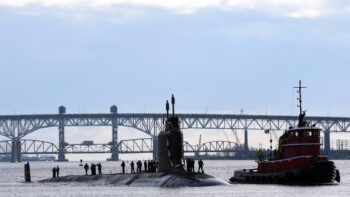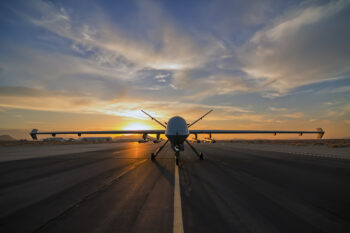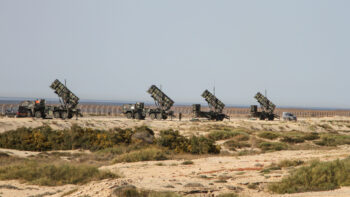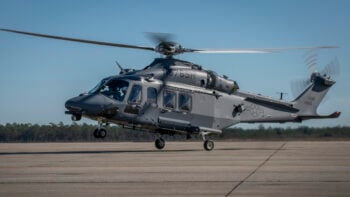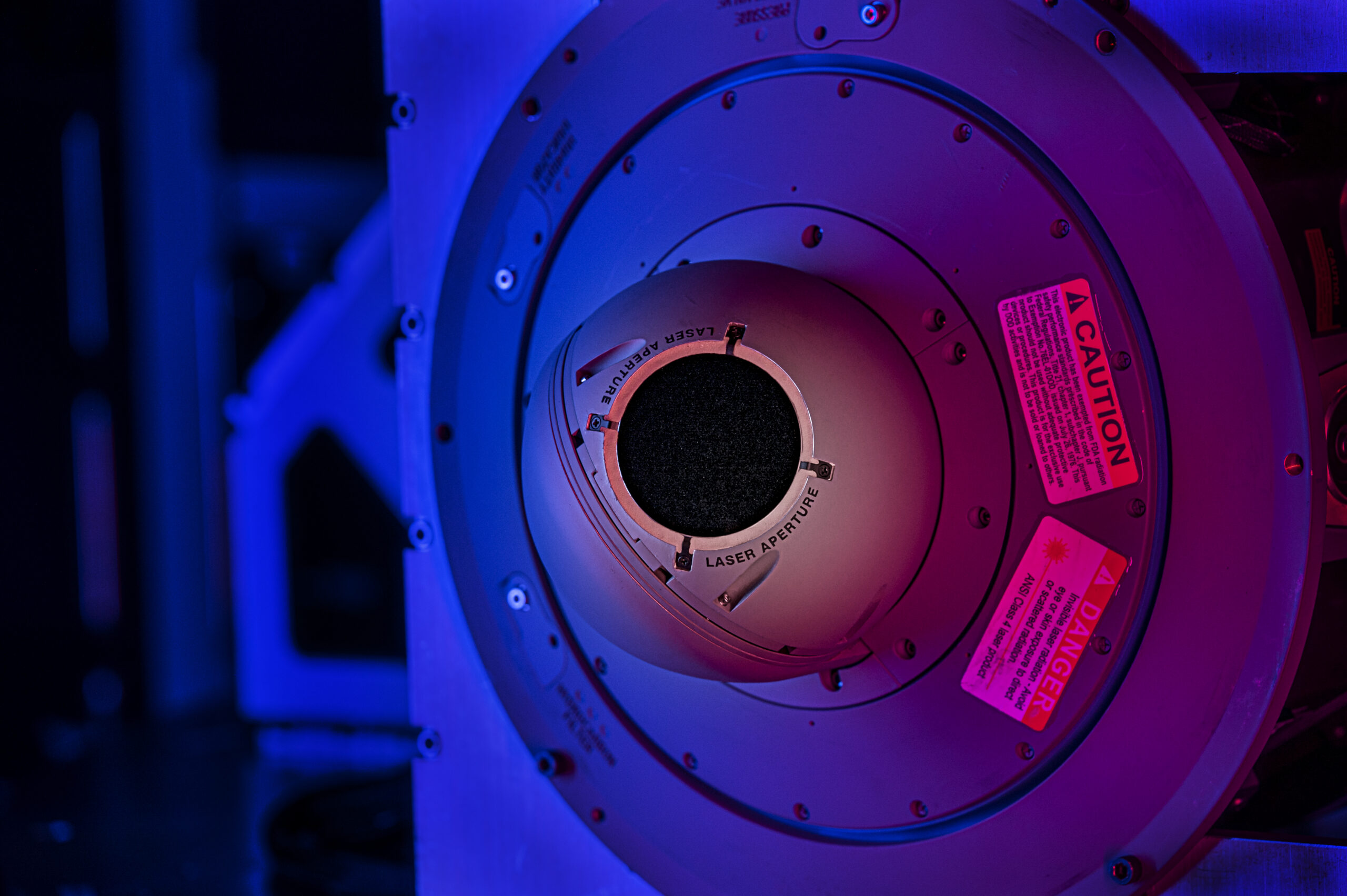
Northrop Grumman’s Large Aircraft Infrared Countermeasure (LAIRCM) automatically counters advanced infrared missile systems by directing a high-intensity laser beam into the missile seeker. Image courtesy of Northrop Grumman.
Radio frequency threats are proliferating rapidly, optical- and infrared-guided weapons are becoming smarter, and advanced systems are beginning to combine the features of both. It’s a multispectral threat environment that calls for protection across the spectrum. The future of survivability will be adaptive, including both onboard and offboard countermeasures.
In this Q&A with Dennis Neel, director of Survivability Development Programs, Northrop Grumman, we place an emphasis on IR countermeasures and how they will be essential for Future Vertical Lift, the role they’ll play not only on aircraft but also for ground forces, and how multiple IR sensors work together in a multispectral system.
Breaking Defense: Northrop Grumman has a long history in aircraft self-protection across the electromagnetic spectrum. What are some of the highlights, especially with your focus on EO/IR survivability programs.

Dennis Neel is director of Survivability Development Programs at Northrop Grumman.
Neel: Northrop Grumman has more than two decades of experience in this area, and we’ve been on about 1,500 aircraft and 85 different aircraft types. That ranges from our Large Aircraft Infrared Countermeasure (LAIRCM) systems on Air Force and Department of the Navy platforms, to our Common Infrared Countermeasure System known as CIRCM on smaller rotorcraft platforms in the Army.
The engagement timeline for threats against platforms is very short, so you must find them quickly, identify what they are and where they are, and then defeat them. The way we do that is by putting laser energy onto the fast-moving missile to basically blind it so it can’t see the platform anymore.
The timelines for these types of threats do not allow a pilot to intervene, so this is all done automatically. The system must be able to scale with the threat because the threat is a constantly moving target, not only in the space but also in its capabilities.
We bring architectures that are scalable and modular that can improve over time to advance as the threat advances.
Breaking Defense: Multispectral sensing typically includes two or more physically different systems, each sensing in a different part of the RF spectrum such as radar and EO/IR, producing data that is fused together to create a more accurate picture of the target. In the case of multispectral IR countermeasures, we’re talking about multiple IR sensors as part of a multispectral system. Please explain.
Neel: The missile warning sensors look out into the environment and find threats in the IR portion of the spectrum. Threats are tracked and handed off from a wide-field-of-view IR sensor to a narrower-field-of-view IR sensor. It tracks the actual missile and brings laser energy to that threat to defeat it. That’s what I call the IR kill chain for survivability.
These sensors are part of a family of IR sensors that look in different bands of the IR spectrum to provide different pieces of information. We need to cover 360 degrees around a platform because anywhere you leave a gap is a vulnerability. It’s our job to see everywhere on the platform to make sure the countermeasure system — the laser, in this case — has enough coverage no matter which way the aircraft is banking, climbing, or descending. We have to keep the energy on the threat until it is defeated.
Those constraints differ from RF systems in that, even though they must also provide 360-degree coverage, RF energy goes through certain objects so you don’t need a clear line of sight. IR countermeasures require a clear line of sight.
On a helicopter platform, for example, the challenge is to get enough energy through the rotorcraft side of the platform. How are you able to see through that? We can do that and it’s part of that platform-specific challenges you have to work through.
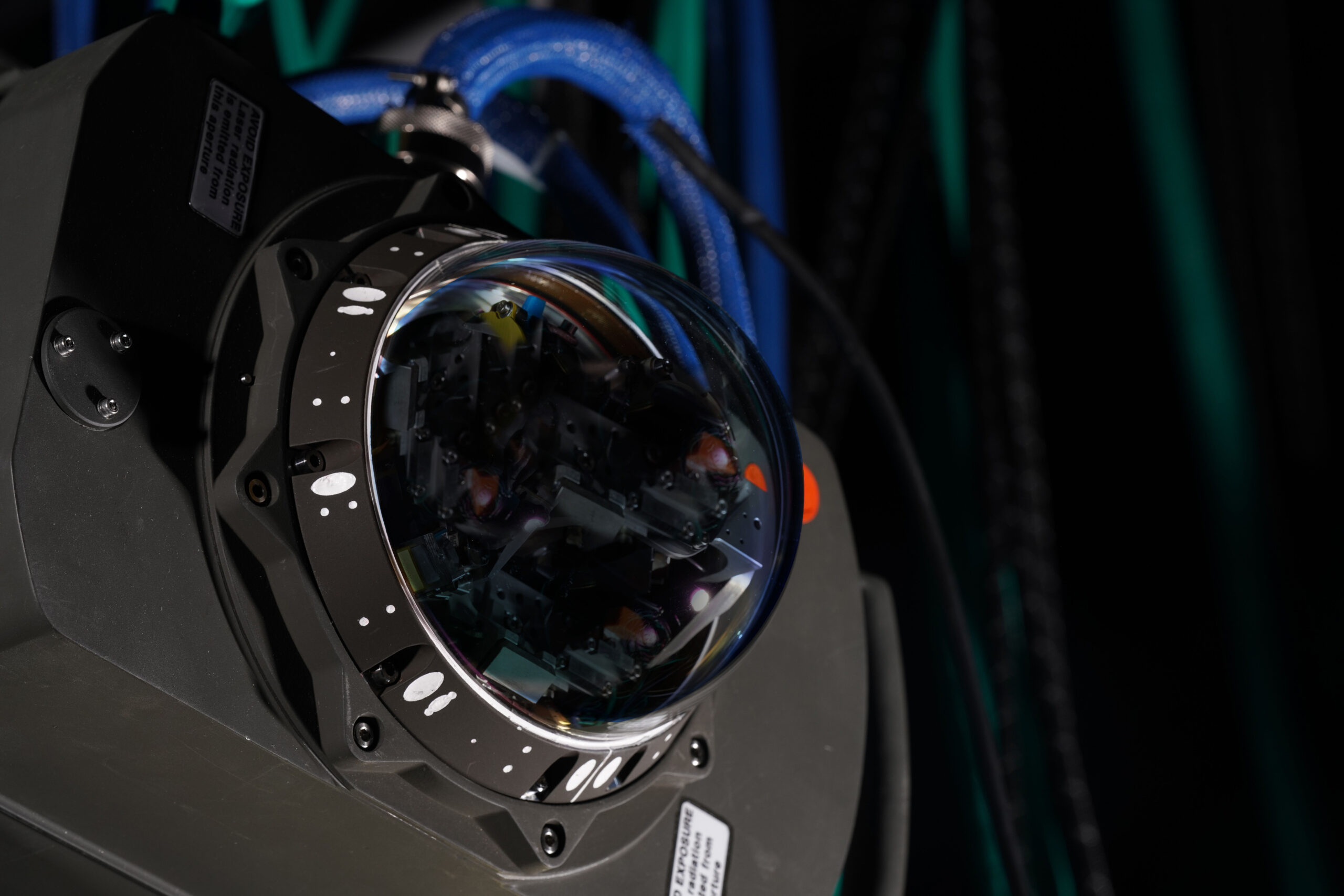
Northrop Grumman’s Common Infrared Countermeasures (CIRCM) system achieved Initial Operational Capability (IOC) from the Army in May and will lead to accelerated fielding of CIRCM systems on more than 1,500 Army aircraft. Image courtesy of Northrop Grumman.
Breaking Defense: And these are the sort of IR countermeasure capabilities you hope to bring to FVL?
Neel: FVL is an exciting initiative that will bring additional and needed capabilities to the Army that they don’t have in today’s fleet. We’re looking forward to being able to have CIRCM go onto those platforms and to work with the Army on additional capabilities.
One of the things that FVL is going to need is improved IR missile warning. They’re going to be flying differently than platforms have in the past, and at different altitudes and speeds. They’re going to need a more capable system because they’re going to go into more highly contested environments.
As we shift from where we’ve been in the Middle East to a peer/near peer confrontation, we need to make sure that our capabilities improve as our adversary’s capabilities are increasing. We need to be able to see threats sooner and increase timelines.
For me, everything comes down to a timeline. How do we make sure that we can see something with enough time to put a countermeasure in place to defeat it? FVL is going to be the first platform where, from the ground up, you’re going to have RF and IR working together more closely because the threats are going to be more dynamic.
Future Vertical Lift is pushing the boundaries of where rotorcraft platforms have been today and where they can go in the future.
Breaking Defense: The conversation about multispectral survivability often centers on airborne platforms. But IR countermeasures also have a role in providing survivability on the ground? Explain.
Neel: Systems in the air have similar needs to those on the ground, and can be adapted.
Take our IR threat warners, for example. When they’re in the air, they’re looking down and have a specific clutter environment that they have to deal with.
Now, perhaps, you’re on a ground vehicle driving around a city and the clutter is very different, with multiple vehicles and objects moving around you. As the day turns to night, the thermal environment changes. You want to be able to identify relatively small threats against a complex backdrop, with different reflections and thermal signatures. You need to be able to see these threats coming at you.
We do that by using the same toolset that we’ve built for the airborne side and bringing it to the ground side. We’re training our algorithms with video and other data to see how they react and can be updated to work in that new environment.
It’s about partnering with our customer, understanding what their needs are and what their threat environment looks like, and then tailoring the solution set around that.
Ultimately, you still need to be able to find and address the threats. Perhaps you’re not putting a laser on it, maybe you’re doing something a little more dynamic with it. There’s lots of ways to cue different countermeasures. In the air, we work with both lasers and flares. On the ground, they’ve got different systems that they’re working with.
It’s the same problem, though: find the threat and point your countermeasure system at it. That’s where what we’ve learned in the air is applicable to the problems that you see on the ground.
Breaking Defense: We’ve been discussing mainly the development and mission set for IR countermeasures. How does Northrop Grumman participate in other phases of the product lifecycle?
Neel: An important fact about Northrop Grumman is that we understand not only how to develop the core technologies, but that we need to repair it on the back end of the product lifecycle. We build that into the requirements up front for whatever we’re developing in order for it to be maintained through the life of the platform.
The system could have a 20-30 year life in the field, so how do we do that? It can’t be done as an afterthought. You have to bring that thought process up front. We look at not only modularizing our software, but also our hardware. How do we break that up in ways that you can repair it? What are the key components and systems that need to be repaired, and how can we ensure that they can be rapidly repaired in the field?
Because for systems like ours, we need it to work 100 percent of the time. We understand how important it is to the warfighter.
Breaking Defense: Final thoughts?
Neel: Northrop Grumman has more than two decades of experience providing very effective infrared countermeasure systems on a number of platforms. We’ve learned that we have to continually evolve with the threats, so we continually upgrade our systems. We build them in such a way that we can do that. We design our software to be modular and able to evolve with new threats.
Where we’re going to go is even more challenging than where we’ve been in the last couple of decades in our fights. We’re going to need these systems, and more capabilities inside of these systems, to protect warfighters in those threat environments.

















